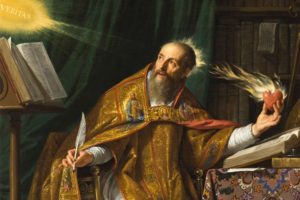
This painting by Pier Francesco Mola is titled “St. Peter Freed from Prison.” It came to mind this evening as I read a section from Paul Tournier’s classic book Guilt and Grace, a section that underscores the liberating effect of God’s redemptive love. A man whom William Barclay called “…skilled in medicine and wise toward God,” Tournier worked for many years as a physician in Geneva, Switzerland in the early-mid part of the 20th Century. His insights into the relationship of guilt and grace are powerful.
Religion may liberate or suppress; it may increase guilt or remove guilt. A moralistic religion, a deformation of religion saturated with the idea of taboos and picturing God as a threatening being, awakens fear, and sets in motion the sinister mechanism of obduracy, revolt, and wickedness. A religion of grace breaks to this vicious cycle, and leads to repentance and thus to freedom from guilt.
Footnotes
Paul Tournier. Guilt and Grace: A Doctor’s Casebook in the Light of he Bible. Trans. Arthur W. Heathcoat. (New York: Harper and Row 1962), 152.




